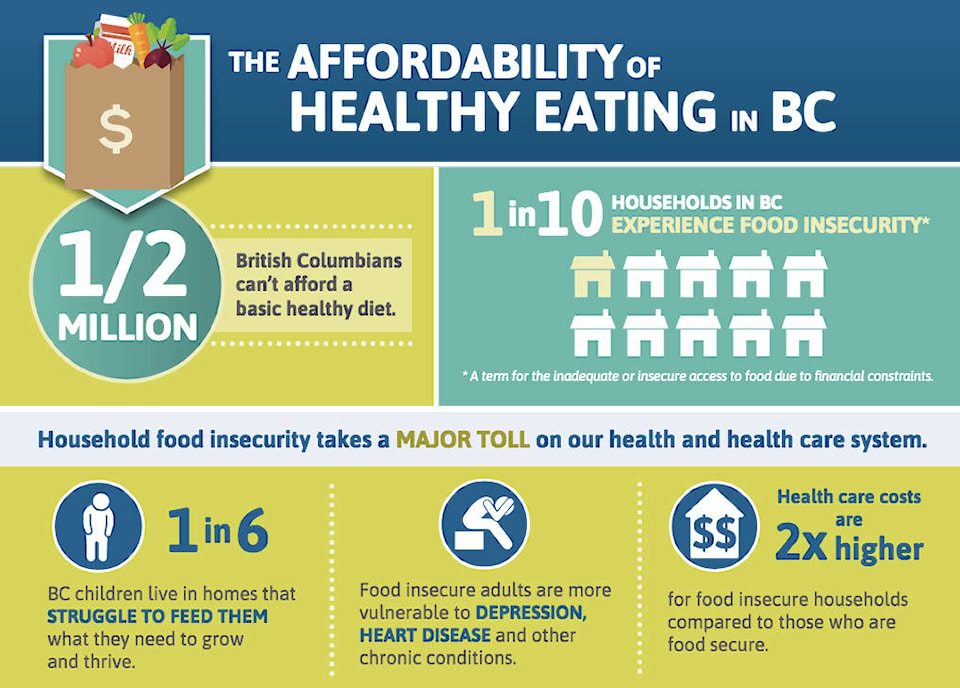A new report by the BC Centre for Disease Control (BCCDC) is shining a light on how increasing food costs are negatively impacting the health of British Columbians in general, and it turns out that those on North Vancouver Island – including Campbell River – are paying even more than the provincial average for a basket of healthy groceries.
The BCCDC report(.PDF) says the increasing cost of food is contributing to household food insecurity, which has serious health impacts on our society. The study says that food insecure individuals report higher levels of diabetes, heart disease, high blood pressure and food alergies, youth who experience hunger are more likely to habe a chronic condition and poorer general health, and food insecurity impacts social and mental well-being and can increase the likelihood of depression, distress and social isolation. Hunger is also an independent risk factor for depression and suicidal symptoms in adolescence and early adulthood.
So it shouldn’t be a shock to hear the BCCDC’s concern that healthy, nutritious food is getting more expensive and people’s incomes aren’t keeping up. The average monthly cost for a nutritious basket of healthy groceries for a family of four in British Columbia was $1,019 in 2017 – the year the study was performed. That’s up from $974 just two years earlier and $914 two years before that.
Here on Northern Vancouver Island, however, that same basket of food cost $1,036 last year. What’s in that basket?
The makeup of the basket was developed and introduced as a national standard in 1974. It’s called the National Nutritious Food Basket (NNFB) and it contains “67 food items that are minimally processed, require preparation and are considered to be commonly eaten by most Canadians in amounts that would provide a nutritionally adequate, balanced diet.”
But the cost of food, in and of itself, is not the problem, the report says. In fact, the major issue that needs to be dealt with is the combination of rising food costs and the fact that people’s income is not rising alongside that increase – especially those at the lower end of the income scale.
“Information on food costs alone has little meaning … (but) when the cost of a healthy diet is compared to income, the information shows that rising costs of an adequately healthy diet have the biggest impact on those who have the hardest time affording healthy food due to inadequate income,” the report reads, adding, “when assessing food affordability, it is clear that households with the lowest income have the hardest time affording healthy food.”
But if it’s not the cost of food that’s the problem, it’s that people can’t afford it, what can be done? Well, this past summer the province announced “the creation of an expert committee to study the potential for using a basic income approach to reduce poverty,” according to the feedback form currently up at feedback.engage.gov.bc.ca
“Basic income,” the project’s overview says, “refers to a system under which payments are provided to eligible individuals unconditionally by the government,” and the committee is looking for feedback on how the public sees a system like this working, who should be eligible, the pros and cons of implementing such a system and where the money would come from for such a program.
